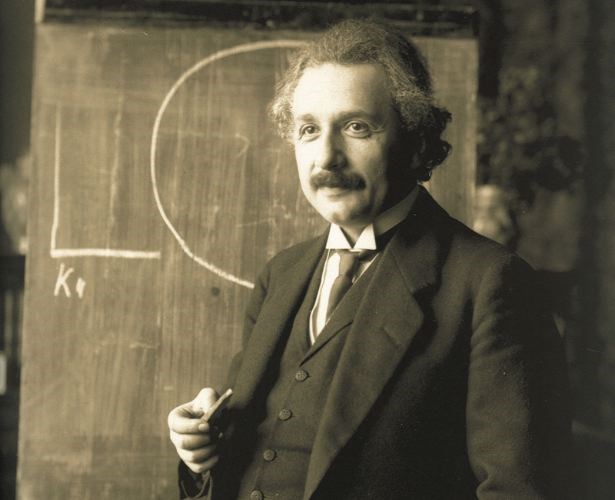Someone once said that if you asked the general public to name a scientist the answer you would most likely get is Albert Einstein.
It is hard to argue with that assertion as he influenced much of modern physics and the development of science throughout the 20th century. Indeed, his influence spread well beyond just physics to other areas such as politics and philosophy.
Without a doubt, Albert Einstein was one of the towering figures of the last century and arguably one of the most important thinkers in human history.
That said, he wasnt perfect. No scientist ever is. We often follow blind leads or pursue theories that just dont pan out. We can be quite convinced that the results that we have are telling us something that they are not.
When asked about how he does physics, Einstein once said: I think and think for months and years, ninety-nine times, the conclusion is false. The hundredth time I am right. It is the nature of science to ask and ask questions but sometimes they dont lead anywhere. Every now and then when we get it right, there is absolutely no doubt and we can change the world.
For Einstein, one of the guiding principles required to understand whether a theory is right or true is its beauty - beauty as a measure of its mathematical elegance and not its facial characteristics. A beautiful theory is one that expresses a complex concept in a simplicity of variables.
For example, Einsteins famous equation, E = mc^2, tells us that matter and energy can be interconverted - that matter and energy are just the two faces of the same coin. The conversion factor is the square of the speed of light which means that a very small amount of matter produces a very large amount of energy.
Einsteins idea led to creation of nuclear power plants and explained the fusion reaction in the Sun. It is fundamental to our understanding of how the universe came to be in the first place.
It is an incredibly simple, elegant equation that can be described as beautiful.
In his search to understand gravity, Einstein struggled with the universe. His equations of gravity told him that mutual attraction should have caused the universe to implode long ago. If everything in the universe is attracted by gravitational force to everything else in the universe then, over a long enough period of time, everything in the universe should collapse into a singularity.
To fix this problem, Einstein was forced to add a cosmological constant to his equations. It was a singular term to describe a force or pressure that prevented the universe from collapsing but it was ugly. It made the equations ungainly.
When Edwin Hubble trained the telescopes at Mount Wilson on nearby galaxies, he discovered that they were well outside the Milky Way and moving away from us. The universe was expanding.
Einsteins cosmological constant required to prevent the universe from collapsing was no longer necessary. He once described it as his greatest mistake.
However, the expanding universe that Hubble observed caused equally perplexing problems. If the universe is expanding then at any point in the past it must have been smaller. Indeed, at every point in the past it must be smaller than any point that comes after.
Following this logic leads to the conclusion that at some point in the distant past, the universe would shrink to the size of nothing. It would shrink into a singularity.
Fred Hoyle, in an effort to make fun of this theory and discredit it, called it a big bang. He tried to suggest that the notion that the Universe exploded into existence is absurd.
From his work and his writings, it is apparent that the idea of an exploding, expanding Universe was unacceptable to Einstein as well - only much earlier than Hoyle.
A recently discovered paper, written by Einstein in 1931 - 20 years earlier than Hoyles work - proposed a theory that was later championed by Hoyle. It is called the steady-state model. It is essentially argues that the density of the universe is constant.
The theory says that the expansion of space results in a strain or stress that creates energy that results in the formation of matter from nothing in the space between galaxies. This matter fills in for the galaxies as they rush apart much as water fills in a hole. This new matter creates new galaxies.
The theory has subsequently been discredited by more recent observations of the cosmic microwave background. Still, the fact that Einstein thought about it is significant and for some scientists, it suggests that Hoyle might not have been a crank.
Einstein eventually came to accept an expanding universe. He just wasnt happy about it. But maybe he would have been if the final theory turns out to be elegant.



